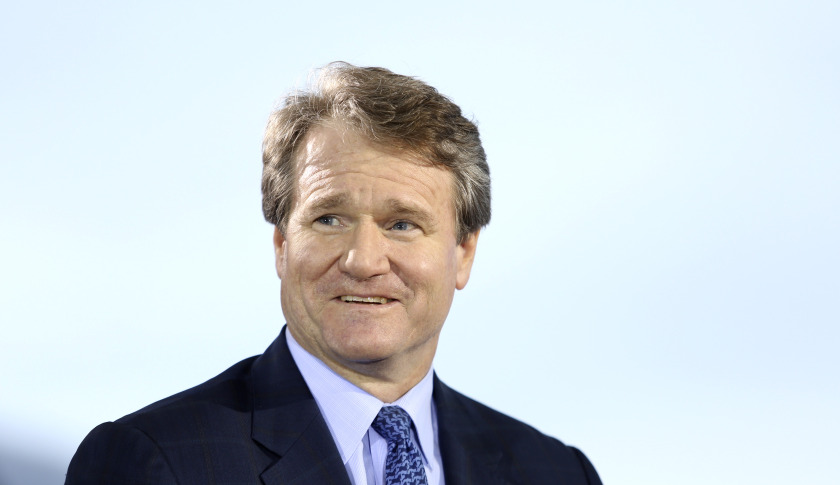Franchising, retail, business

21/10/2014
Put simply, no. Splitting the roles saves money and improves a company’s performance. So why isn’t Corporate America listening?
It’s fairly clear that, at most companies, splitting the chairman and CEO roles saves money, improves performance, and can even potentially keep activist investors at bay. So why isn’t Corporate America listening?
Bank of America’s BAC 1.22% CEO Brian Moynihan was recently appointed chairman after having an independent director occupy that position since 2009. Disney DIS 1.02% recombined the roles for Robert Iger in 2012 after separating them under a very different CEO, Michael Eisner, in 2008. And Oracle’s ORCL 1.57% chairman and CEO Larry Ellison stepped down as CEO, appointing not one but two successors, and remained as chairman and chief technology officer. At Hewlett-Packard HPQ 1.30% , Meg Whitman will be CEO of Hewlett-Packard Enterprise and will become chair of HP Inc. Darden Restaurants’ DRI 1.58% embattled CEO Clarence Otis announced plans to step down, and the company promoted director Charles Ledsinge Jr. as its chairman.
With the split of eBay EBAY 1.32% and PayPal, no one knows exactly what’s happening. The two new CEOs have been appointed as CEO and president only, so far. In response to an inquiry from Fortune, the company responded: “John Donahoe [current CEO] and Bob Swan [current CFO] will be on one or both boards.” While this doesn’t offer much clarity, it hints that either one or both of these individuals will be an executive or non-executive chairman of these boards.
One way or another, it seems like most companies have decided that board independence is overrated. What’s going on here?
A study published in 2012 found that the cost of paying one person as CEO/chairman was significantly higher than paying two people as CEO and non-executive chairman. The study also found that long-term shareholder returns were significantly better at companies that had separated the roles. This model—an executive CEO and a non-executive chairman—has been adopted in most other economies. Why is the U.S. so resistant?
It may not be that American companies are necessarily stubborn about this type of leadership change. They’re just somewhat slow, and potentially myopic. In 2004, according to figures from MSCI GMI Ratings, almost three-quarters of publicly owned companies in the Fortune 500 had combined the CEO and chairman roles. Some 60 companies that had separated the role had installed the former CEO as chairman. Only 34 companies had a fully independent chair.
That situation has changed dramatically since then. MSCI GMI’s figures show that barely half of the Fortune 500 have combined the roles. About the same number as in 2004 have the former CEO occupying the position of chairman, but over a quarter of companies—118—now have an independent director as chairman.
While this represents substantial change, the amount of back and forth at some companies shows that there are still questions about which leadership structure is the most effective. Surely, if you’ve separated the roles, and it’s worked, why would you recombine them?
Many companies only separate the roles when they are under pressure to do so and when things are going wrong. That was certainly the case at Bank of America right after the financial crisis, when Ken Lewis was in charge. Now that Brian Moynihan is there, the board clearly thinks it’s safe to promote him. It’s the same at Disney, where Eisner was under considerable pressure from shareholders and appointing an independent chairman released some of that tension. It’s the same at Darden Restaurants, where the CEO and chairman roles will probably be recombined once a new CEO is appointed and the company’s challenges are resolved, or when the activist hedge fund Starboard goes away.
So why is it important to have a separate chairman and CEO? Put simply, the CEO is the primary manager of a company and the chairman is the head of the board, which oversees management. There’s really no good reason why one person should do both jobs. And there’s really no sense in recombining the two roles when a company’s problems are resolved. It’s silly to believe that new problems, the kind that will require an independent board’s insight, won’t arise in the future.
Finally, appointing an executive chairman, especially when it is a former CEO, is just a bad idea. It puts two managers—or, in the case of Oracle, three managers—in place where one is sufficient, and there is still no independent check on management. And, really, when a former CEO becomes chair, no one is really in any doubt as to who remains in charge. On the final day of Oracle’s annual OpenWorld conference, Ellison stated that most aspects of Oracle’s management wouldn’t change now that Safra Catz and Mark Hurd had become co-CEOs.
A group of large Oracle shareholders wrote a letter to other shareholders complaining about the board’s accountability. They classified the tech firm’s leadership changes “as simply a rearrangement of the deck chairs which serves to further empower executive management.”
Most, if not all, companies would be wise to appoint an independent chairman and make the position permanent in the company’s bylaws, so the decision can’t be reversed without shareholder approval.
Editor’s note: A previous version of this story incorrectly stated that Meg Whitman will be CEO and chair of Hewlett-Packard Enterprise. In fact, Whitman will be CEO of the company, not chair.
Fonte:http://fortune.com/2014/10/21/chairman-ceo/?utm_content=buffer26486&utm_medium=social&utm_source=twitter.com&utm_campaign=buffer